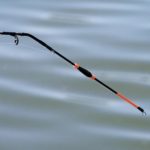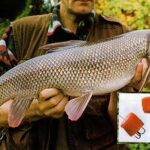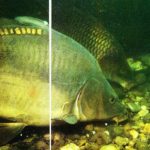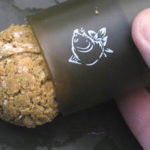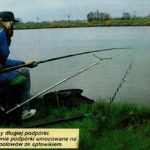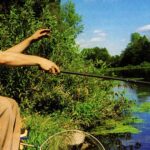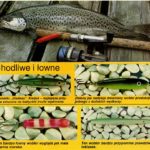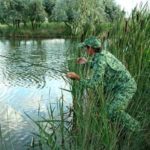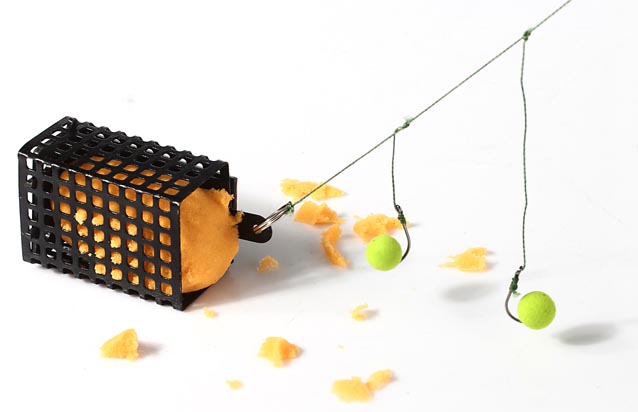 W wielu dziedzinach życia o sukcesie czasami decydują detale. To samo dotyczy także gruntowego łowienia ryb na zestaw z koszyczkiem zanętowym.
W wielu dziedzinach życia o sukcesie czasami decydują detale. To samo dotyczy także gruntowego łowienia ryb na zestaw z koszyczkiem zanętowym.
Łowienie na zestaw z telewizorkiem jest niezwykle proste i nawet początkujący wędkarz szybko zaczyna odnosić sukcesy. Jeżeli jednak ktoś wędkuje z telewizorkiem trochę dłużej, przeważnie zaczyna zastanawiać się, co zrobić, aby mieć jeszcze lepsze efekty i (owić ryby nawet w niezbyt sprzyjających warunkach. W wędkarstwie, podobnie jak w życiu, o sukcesach bardzo często decydują zwykłe detale. Wyobraźmy sobie na przykład, że łowimy w jakimś zbiorniku o bardzo silnej presji wędkarskiej. Tamtejsze ryby są bardzo ostrożne i z reguły starają się trzymać jak najdalej brzegu. Jeżeli mimo tego chcemy w dalszym ciągu je łowić, nie pozostaje nam nic innego, jak rzucać na odpowiednią odległość.
Możliwości są więc dwie – albo zdecydujemy się na cięższy koszyczek zanętowy, albo nawiniemy na kołowrotek cieńszą żyłkę. Osobiście skłaniam się do tego drugiego, bardziej finezyjnego rozwiązania. Współczesne żyłki wysokiej jakości mają przecież już taką wytrzymałość, że przed laty mogliśmy sobie tylko o tym pomarzyć.
 Muszka i szczerbinka
Muszka i szczerbinka
Jeżeli chcemy w pełni wykorzystać wszystkie atuty techniki łowienia z koszyczkiem zanętowym w wodzie stojącej, musimy starać się rzucać możliwie dokładnie zawsze w to samo miejsce. Tylko wtedy zanęta i ryby skoncentrują się na stosunkowo małej powierzchni. Rzucanie za każdym razem na tę samą odległość i w tym samym kierunku nie jest aż takie trudne. Robimy to mniej więcej tak – podczas zwijania wędki bierzemy namiar na jakiś charakterystyczny punkt odniesienia na przeciwległym brzegu. Podobnie jak przy celowaniu z karabinu, gdy trzeba zgrać muszkę ze szczerbinką, ustawiamy wędzisko przed następnym rzutem na wybranym celu po drugiej stronie zbiornika i rzucamy idealnie na wprost. Kierunek będzie się wtedy zawsze zgadzał. Taką samą odległość zachowamy tylko wtedy, jeżeli po pierwszym rzucie zakleszczymy żyłkę w klipsie na szpuli kołowrotka lub zaciśniemy na nawiniętej na szpulę żyłce gumkę.
Po wykonaniu rzutu naprężamy żyłkę, abyśmy mogli na lekko wygiętej szczytówce bez trudu zauważać brania. Wyostrzanie żytki wcale nie jest taką łatwą czynnością, szczególnie gdy łowimy na bardzo dużą odległość.
Zatapianie żyłki
Po wykonaniu długiego rzutu żyłka wybrzusza się w powietrzu a następnie swobodnie układa na wodzie. Normalna żyłka tonie w wodzie bardzo powoli i jeżeli na dodatek jest jeszcze luźna, musimy ją trochę nawinąć na kołowrotek, dopóki szczytówka wędki nie znajdzie się w ustalonej już raz pozycji.
Zatapianie żyłki jest znacznie szybsze, jeżeli żyłka sama z siebie jest tonąca. Każda żyłka tonie w wodzie jeżeli jest dobrze odtłuszczona. Wystarczy ją więc przeciągnąć przez kawałek gąbki nasączony płynem do zmywania naczyń. Możemy też od razu kupić tonącą żyłkę (na przykład Milo lub Platil). Żyłka szybciej znajdzie się pod wodą jeżeli, podobnie jak podczas łowienia ze spławikiem przelotowym, zaraz po rzucie zanurzymy szczytówkę wędziska w wodzie i kilka razy pokręcimy korbką zatapiając żyłkę. Powinniśmy jednak robić to z wyczuciem, gdyż w przeciwnym razie zanęta zacznie nadmiernie wydostawać się z koszyczka. Korbką kręcimy bardzo powoli i staramy się utrzymywać lekki kontakt z opadającym w wodzie telewizorkiem. Po opadnięciu koszyczka na dno przeważnie wystarczy tylko boczne odłożenie kija na podpórki, aby żyłka odpowiednio się naprężyła.
Zwisająca żyłka
Zupełnie inaczej wygląda wędkowanie w chłodny zimowy dzień w kanale. O tej porze roku ryby są bardzo grymaśne i biorą niezwykle delikatnie. Brania są słabo widoczne nawet na najbardziej delikatnej szczytówce. Aby temu zaradzić, to znaczy lepiej spostrzegać delikatne skubnięcia, proponuję Wam następującą sztuczkę. Po zarzuceniu wędki nie naprężamy żyłki do końca, lecz pozwalamy jej tak zwisać, aby w powietrzu tworzyło się lekkie wybrzuszenie. Tego wybrzuszenia nie spuszczamy już więcej z oczu. Brania sygnalizowane są poprzez lekkie naprężenie lub poruszanie się zwisającej żyłki. Luźna żyłka jest najbardziej czułym ze wszystkich znanych mi sygnalizatorów brań. Na każde, nawet nieznaczne poruszenie się żyłki reagujemy natychmiastowym, dość energicznym zacięciem.
